Create a Non-Clos Fabric
Before you begin
- A non-clos topology supports a maximum of four racks with two devices each.
- The devices must be registered with the inventory before adding them to the fabric.
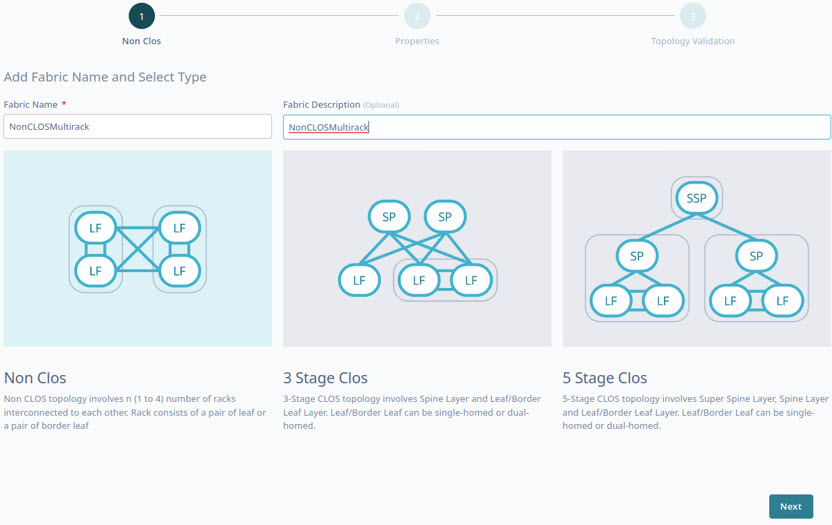
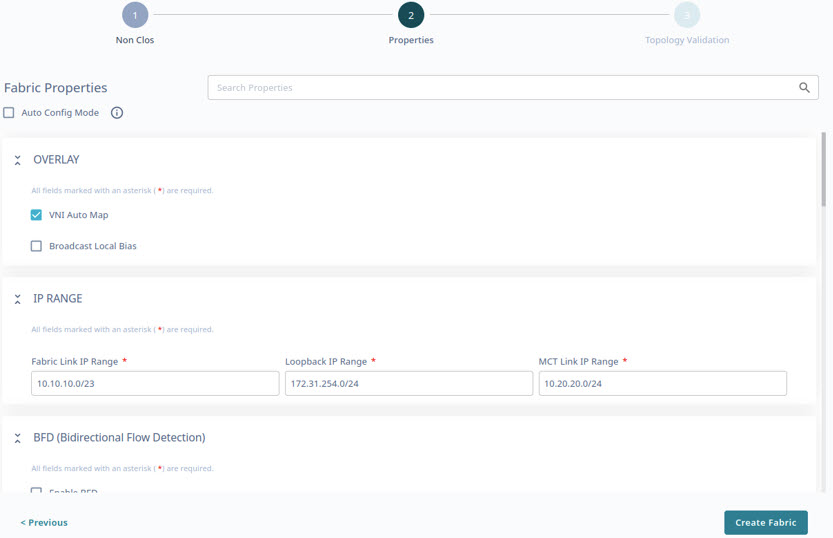
 ) and
List
view (
) and
List
view ( ) to
switch the view between topology and list.
) to
switch the view between topology and list.
 ), select
Remove or select Delete (
), select
Remove or select Delete ( ) in the devices
panel to remove a rack.
) in the devices
panel to remove a rack. ), select Convert to Border
Rack or Convert to Leaf
Rack to change the rack type.
), select Convert to Border
Rack or Convert to Leaf
Rack to change the rack type.

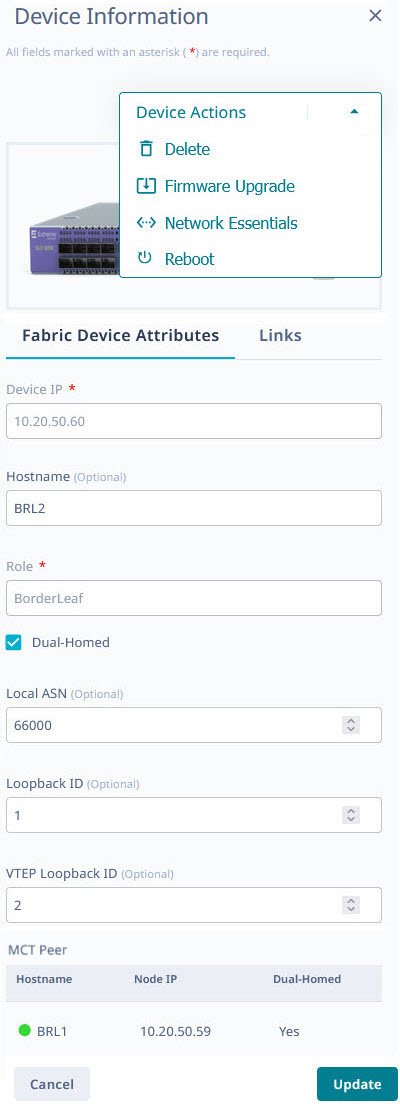
The ports or links that are down are marked in red in the topology. To turn a port or link up:
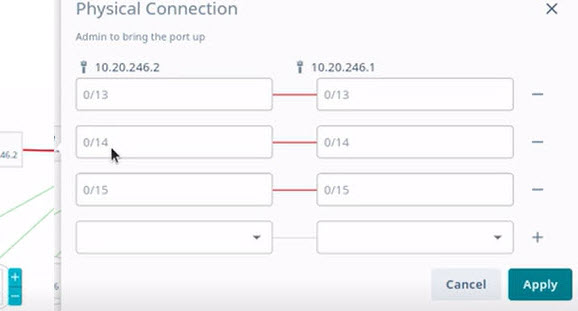
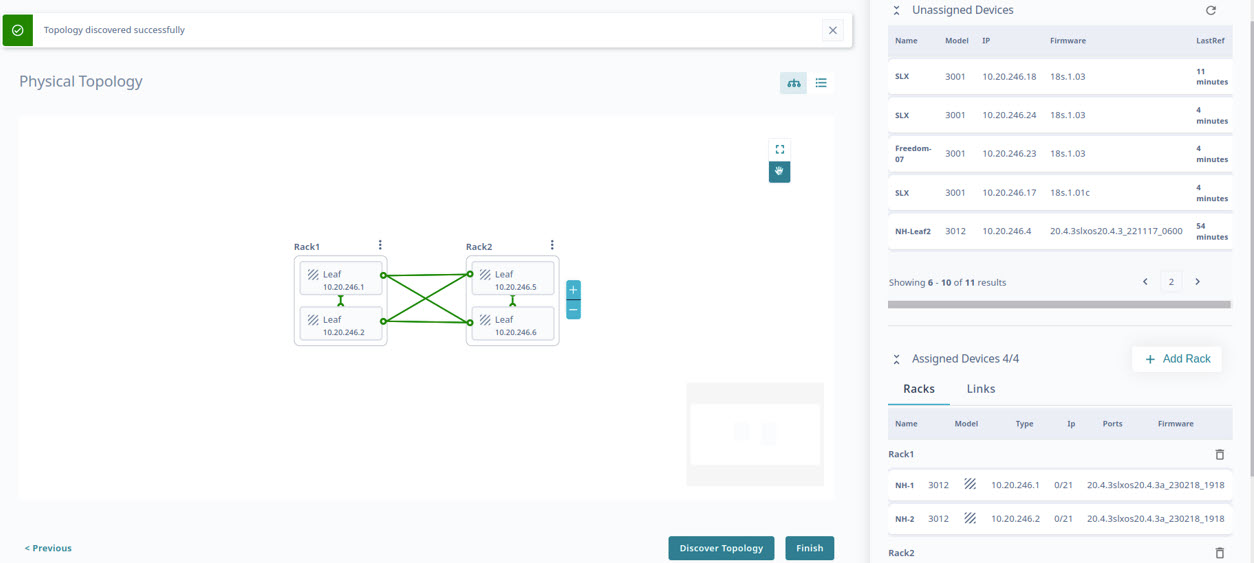
 ).
).
 ) icons.
) icons.
 ) icon.
) icon.
